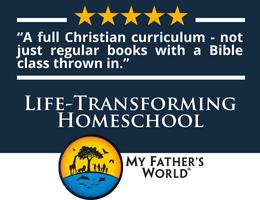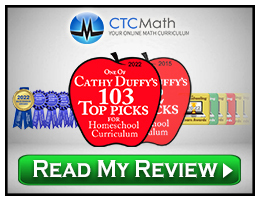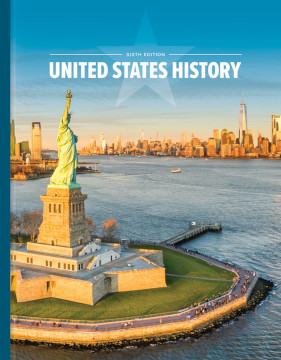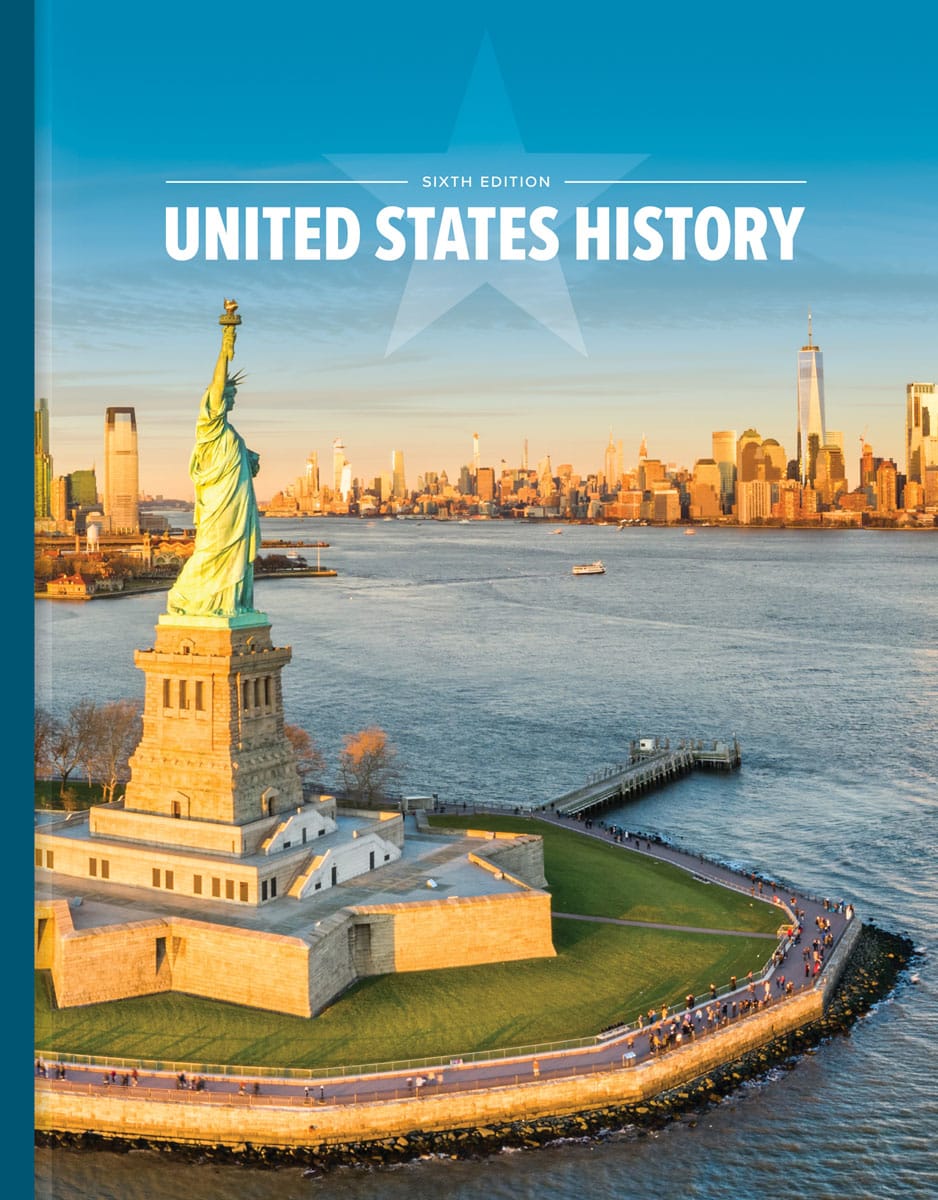United States History, sixth edition, was written for Christian students in the eleventh grade, although it might be used in a different year of high school. The textbook begins with a very important worldview introduction, titled “Who Decides What History We Learn?”, which explains that all history textbooks reveal their authors’ worldviews through what they choose to include, facts they emphasize, the wording of their presentation, and even the images used to illustrate lessons. The worldview of this course is presented in the front of the Teacher Edition as well as throughout the course. Page x of the Teacher Edition says, “This textbook presents United States history from a biblical worldview, highlighting Christian and religious aspects of American history that secular textbooks leave out. Religion is therefore a major theme in this book.” The text is written from a more specifically Protestant point of view, although, aside from doctrinal issues raised in the first chapter, it generally treats Catholicism with refreshing objectivity. The text also reflects a conservative political outlook that is most apparent in the final chapters that cover through the Biden administration in 2024.
Compared to previous editions of this textbook, the information on colonial America has been reduced to allow for more coverage of recent history. So the first chapter now covers early explorations, native Americans, English exploration and colonization, and the importation of African slaves to the Americas. This edition has added an entire chapter on the Civil Rights Movement from the 1940s to the 1960s, and the final chapter covers current cultural and political issues.
Rather than simply presenting information, this textbook delves into the philosophical ideas and beliefs out of which arise the issues and events of history. Questions in the textbook, as well as activities in the companion student Activities book, often push students beyond superficial answers.
Course Components
The United States History Subject Kit consists of the student textbook, the two-volume Teacher Edition, a United States History Activities book, the answer key for the Activities book, assessments, and an answer key for the assessments.
Video teaching of this course is available online or on DVDs, both with the option of either online or physical books.
Homeschoolers also have access to digital resources on the BJU Press Homeschool Hub.
The Student Textbook
The softbound student text has an attractive layout. Its 736 pages of student text are followed by appendices (a map, the Declaration of Independence, the Constitution, a list of states in order of admission, and a list of presidents), a glossary, and an index. The course is presented in 25 chapters, with each chapter divided into several sections to provide natural breaks.
The textbook features numerous full-color illustrations, maps, sidebars, and information, often arranged graphically to enhance understanding. For instance, six reasons for “Why the English Came” on page 19 are divided into six visual sections, each with its own icon. Green boxes titled “Did You Know?” present fun facts, and special topics are typically presented in a lengthy call-out box accompanied by an illustration. The layout makes this text easier to read than many other high school history textbooks.
One of the strongest features of this course is the excellent, thought-provoking questions. Sections within chapters begin with “Guiding Questions” to help focus student attention on key ideas as they read. Each section concludes with a set of questions, presented in two groups: multiple-choice comprehension questions and “Making Connections” questions, such as “How did the Separatists and Puritans differ from one another?” (p. 31). Chapter Reviews include terms to know, summaries of key points, and questions under three categories: Recall, Understand, and Think About It.
Additional questions are sometimes posed in the Teacher Edition, such as on page 135 under “Apply,” where the teacher is supposed to have students (working in pairs) answer the question, “How well do Jefferson’s and the Federalists’ views of human nature and government align with Scripture’s teaching on human nature?” Students are given four Bible verses to use as the basis of scriptural teaching. (Note that, in most cases, a student working independently should still be able to answer this type of question.)
The textbook does not shy away from controversial topics, and it often clearly leans toward a particular opinion. For instance, in its relatively lengthy coverage of the COVID-19 pandemic, it says,
There was much heated debate in America about COVID-19 restrictions. Some Americans believed that state and local governments were abusing power by introducing COVID-19 policies, while others accepted the mandate as necessary to protect the health of citizens. Some questioned the effectiveness of these public health measures and whether they were worth the risks to the economy and to the social and emotional health of Americans (p. 668).
Revealing the textbook’s authors’ point of view even more clearly, a question for students on page 673 asks, “How did the COVID-19 pandemic change American society? Why did some American disagree with the government’s COVID-19 policies?” (Notice that it doesn’t ask, “Why did many Americans support the government’s policies?”)
Similarly, topics such as the Supreme Court’s overturning of Roe v. Wade, the U.S. withdrawal from Afghanistan in 2021, the Biden administration’s efforts to prosecute Donald Trump, and the LGBTQ+ agenda all reflect conservative Christian viewpoints. Opposing viewpoints are only briefly addressed. On issues that are considered debatable among Christians, such as immigration policies, racism, climate change, and gun control, students are often asked to answer questions by weighing opposing arguments.
The Teacher Edition
The Teacher Edition comes in two, spiral-bound books, with reproductions of slightly reduced student pages. Surrounding the images of student pages is teaching information identified under headers such as “Engage,” “Instruct,” “Apply,” “Differentiated Instruction,” “Assess,” and “Recall.” There are also sections with headings for particular topics, like “Native American Culture,” “Columbus Day or Indigenous Peoples’ Day?,” and “Dutch Influence.”
The ”Instruct” information sometimes can be conveyed directly from the Teacher Edition, but it often tells the teacher to guide a discussion on a particular topic.
Answers to both the section and chapter questions also surround the reduced student pages. Aside from those requiring subjective responses, the answers include page numbers showing where each topic was covered. This makes it easier to direct students to pages they should review.
Student Activities Book and Tests
The 287-page United States History Activities book includes map work to complete, primary source documents and visual information to analyze, questions to answer (both brief and short-essay answers), columns to match, and other activities that reinforce and expand learning beyond material taught in the textbook. The Activities answer key has the entire student book with answers overprinted in magenta.
The assessments come in a loose-leaf packet of 25 tests, one per chapter. They contain various types of questions, such as multiple-choice, matching, and essay. The assessments have their own answer keys.
Homeschool Hub
Homeschoolers also have free access to BJU Press’s Homeschool Hub for simple lesson plans, videos, website links, and other instructional aids, as well as a digital scheduler and gradebook. The videos and weblinks provided for most lessons are very useful, so don’t miss them. For example, for Section 1.2 Age of Exploration, the lesson includes a proprietary video about the settlement of St. Augustine, Florida by the Spanish years before the settlement of Jamestown plus links to videos about Vasco de Gama and Hernando de Soto, an interactive map of explorers, a Khan Academy lesson on “The Columbian Exchange,” and links to the journals of Amerigo Vespucci and Christopher Columbus.
Summary
Even though all homeschoolers will not agree with its religious and political perspectives, BJU Press’s United States History course is exemplary in its emphasis on critical thinking and analysis.











